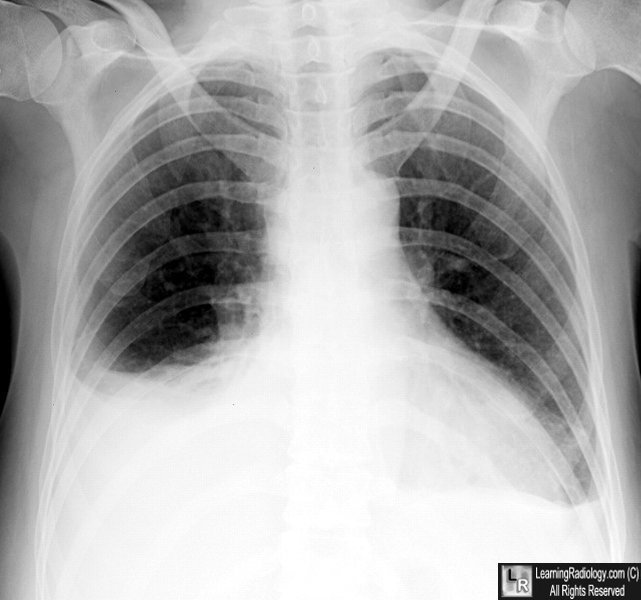|
|
Pleural Effusions
There are normally a few milliliters of fluid in the pleural space; about 75 mL are required to blunt the posterior costophrenic sulcus (seen on the lateral view) and about 200-300 mL to blunt the lateral costophrenic sulcus (seen on the frontal view); approximately 2 liters of fluid will cause opacification of the entire hemithorax in an adult.
Blunting of the Costophrenic Angles
- As the subpulmonic effusion grows in size, it first fills and thus blunts the posterior costophrenic sulcus, visible on the lateral chest. This occurs with approximately 75 cc of fluid.
- When the effusion reaches about 300 mL in size, it blunts the lateral costophrenic angle, visible on the frontal chest radiograph
Causes of Pleural Effusions
Excess formation of fluid |
Congestive Heart Failure
Hypoproteinemia
Parapneumonic effusions
Hypersensitivity reactions |
Decreased resorption of fluid |
Lymphangitic blockade from tumor
Elevated central venous pressure
Decreased intrapleural pressure |
Transport from peritoneal cavity |
Ascites |

Bilateral Pleural Effusions. There is blunting of both costophrenic angles, right greater than left. The fluid has a characteristic meniscus shape. Bilateral pleural effusions are most frequently the result of congestive heart failure.
|
|
|